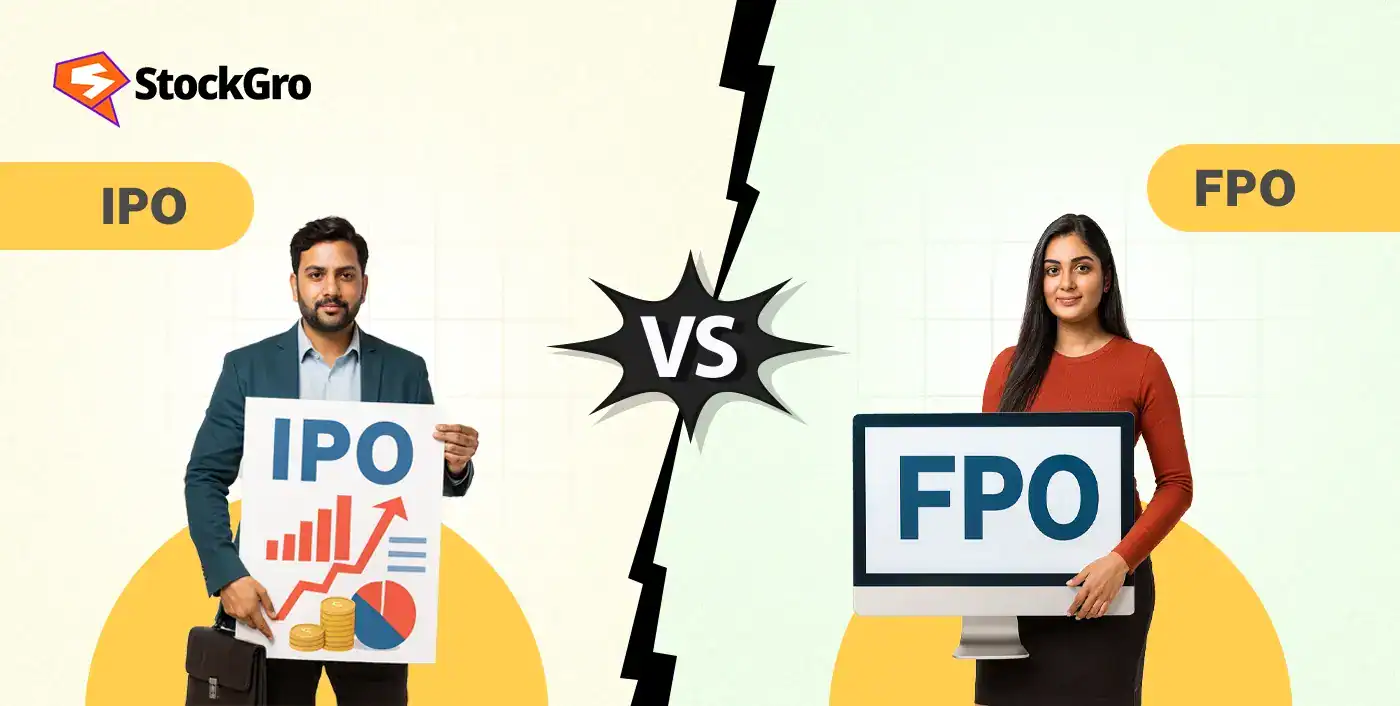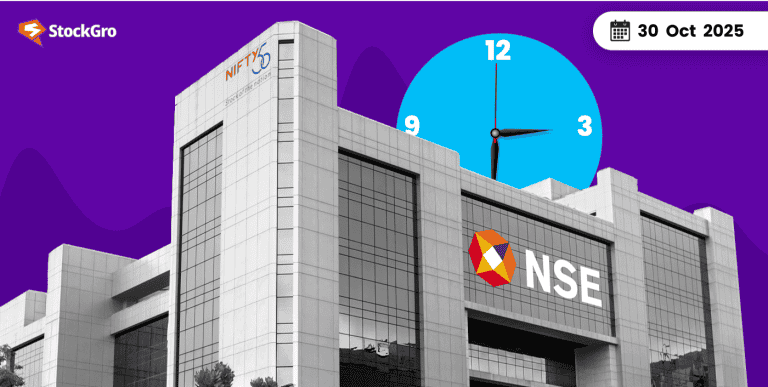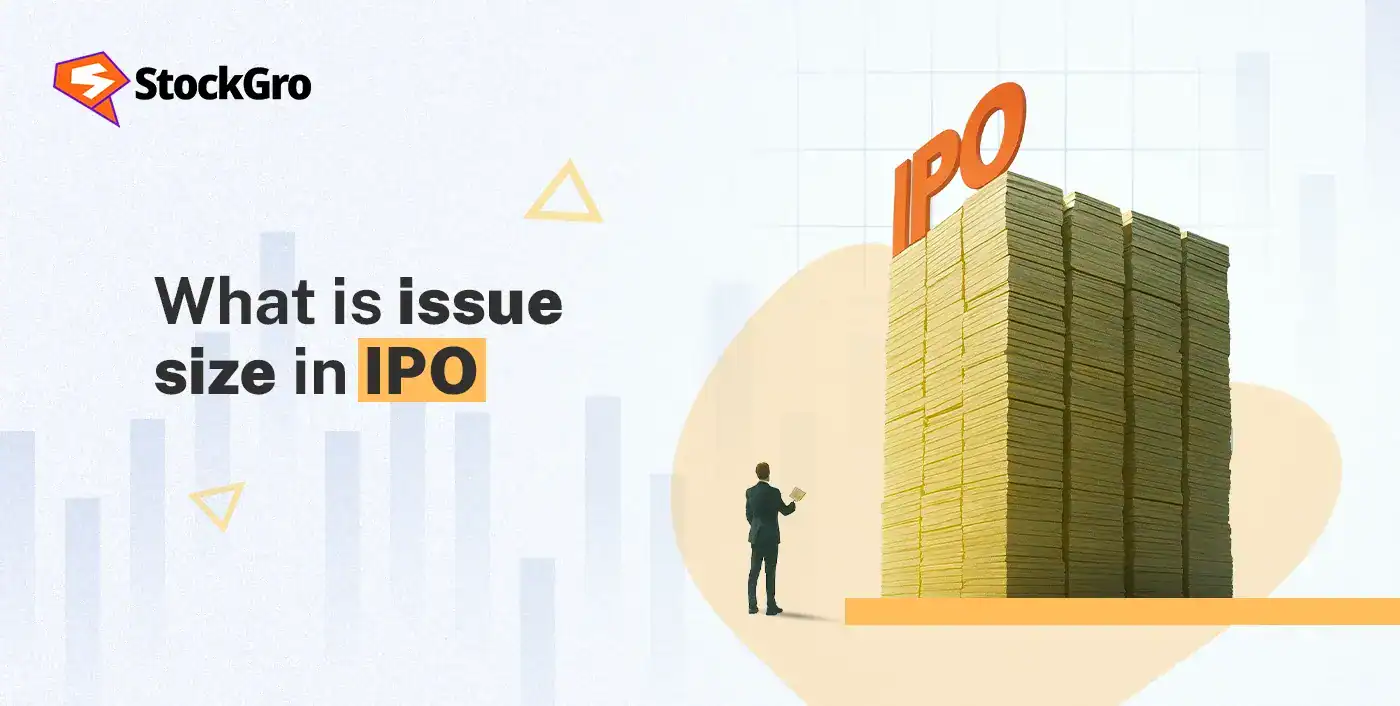
The Indian primary market has been on the rise. As of Oct 19, 2025, 80 new companies have been listed this year, accounting for $14 billion. The rise in the primary sector leaves the investor stuck between IPO(Initial Public Offering) and FPO(Follow-on Public Offering). In this reading, we will learn about what these two are, how they work, and the value they hold for the investors.
If you follow the market, you must have come across the two words- IPO and FPO. Both terms are used to describe the phases of a company’s public going journey. In an IPO, the company issues shares to the public for the first time. In an FPO, already listed companies issue new shares to raise more capital.
What is an IPO?
IPO stands for Initial Public Offering, where a company seeks to offer its shares to the public for the very first time. It is a major milestone that allows the company to transition from a privately owned entity to a publicly listed company.
The primary goal behind an IPO is to use the capital for expansion, reducing debt, or enhancing the company’s reputation in the public eye. After being listed, anyone can buy or sell the shares of the company.
An IPO carries the following significance for the company:
Raising Capital: It helps in raising funds, which can be used for expansion, debt reduction, or other activities that lead to sustainable growth.
Public Recognition: After being listed, the company becomes visible to the public eye. This helps in attracting more customers. and opens the door for new business partnerships and deals.
Exit Option: IPOs provide an exit route to the company’s founders, early-stage investors, and venture capitalists. They can sell their shares to the public and realise the returns on their investment.
The IPO is also significant for the investors, as it provides:
Investment Opportunity: Investors can apply to become a part of the company in its early public stage. It carries the potential for very high returns over time.
Diversification: IPOs are a good option for investors looking to diversify their portfolio with new companies that may yield high returns.
Types of IPOs
Based on their pricing, IPOs are divided into the following types:
- Fixed Price IPO: In a fixed price IPO, the company sets a fixed price for its shares before the IPO opens. The investors can only buy the shares at the fixed price.
- Book Building IPO: In a book-building IPO, the company sets a price band for its shares. Investors can apply for multiple lots within the price range. The listing price is determined by the demand, which is a better reflection of the market sentiment.
- Hybrid IPO: In a hybrid IPO, the elements of a fixed price IPO and a book-building IPO are combined to cater to different kinds of investors.
Apart from the different types, the IPOs are bifurcated into two segments based on the company size and its scale of offering. The two IPO segments are:
- Mainboard IPO: refers to the IPO of large, well-established companies, whose shares will be listed on the primary stock exchanges such as NSE (National Stock Exchange) and BSE (Bombay Stock Exchange). Mainboard IPOs are required to meet strict requirements laid down by SEBI.
- SME IPOs: are used by small and medium enterprises, who wish to raise capital from the public but do not have the requirements to SEBI’s listing criteria. These IPOs are listed on the BSE SME and NSE Emerge platforms.
What is an FPO?
In an FPO(Follow-On Public Offering), already listed companies issue fresh shares to raise more capital from the public. These companies have already proven their stability and have credibility in the market. This helps them attract more investors as FPOs carry less uncertainty in comparison with IPOs. Like IPOs, FPOs also have a great deal of significance.
FPO’s significance for the company:
Additional Capital: FPOs provide additional capital to the company, which can be utilised for further expansion and growth.
Liquidity: By increasing the number of outstanding shares, the company’s stock has more liquidity, meaning buying and selling it becomes easier.
Market Credibility: A successful FPO builds on the company’s already established image. It helps in increasing investors’ confidence in the company’s future prospects.
The FPOs have the following significance for the investors:
Price Advantage: It provides investors with an investment opportunity at prices discounted from the market rates. It is ideal for investors who missed out on the IPO and/or were waiting to invest after the company has proven itself.
Dilution: FPOs may issue new shares, which can dilute the value of already existing shareholders. Investors should consider this when a company announces its IPO.
Types of FPOs
The two different types of FPOs are:
- Dilutive FPO: In this form of FPO, the company issues new shares, increasing the total number of shares floating in the market. It dilutes the value of the pre-existing shares.
- Non-Dilutive FPO: In this type of FPO, the already existing shareholders, such as the founders and venture capitalists, sell their shares to the public. The number of shares remains the same, and there is no dilution in their value.
Key Differences Between IPO and FPO
When we compare IPO vs FPO, we come across the following differences:
| Basis | IPO | FPO |
| Meaning | The company is issuing shares to the public for the first time | Already listed company is selling its shares to the public |
| Objective | Raising capital for expansion or reducing debt | Raising additional funds for future growth or dilution of shareholders |
| Ownership | The ownership converts from a private to public | The company is already listed publicly |
| Price | Fixed or variable within the price band | Based on the forces of demand and supply in the market |
| Regulatory Requirements | Stringent regulatory requirements and disclosures have to be followed | The regulatory requirements are comparatively relaxed |
| Return Potential | Higher potential for return that leads to capital appreciation | Lesser room for capital appreciation |
| Risk | HIgher risk as limited information about the company is available | Lower risk as company’s historical records are easily available |
Advantages and Disadvantages
Both IPOs and FPOs come with their share of advantages and disadvantages. Let’s discuss them one by one. We’ll start with IPOs.
The advantages of IPOs are:
1. Raising Capital: The most evident advantage of IPOs is that they help companies raise capital from the public. This capital is interest-free, so the company can flexibly use it for expansion, R&D, reducing debts, or any other activity that leads to its growth.
2. Visibility and Credibility: IPOs put the company in the eyes of the public. Its visibility increases, and after being listed, it is seen as credible by the market. It helps in attracting more investors and potential business opportunities.
3. Exit Route: IPOs give an exit opportunity to the company’s founders, early investors, and venture capitalists. They can sell their shares to the public, exiting their holdings in the company to enjoy the returns on their investment
The disadvantages of IPOs are:
1. Higher Cost: Underwriting fees, along with fulfilling other regulatory requirements, increase the cost of launching an IPO.
2. Market Volatility: The market can have different sentiments as no prior information about the company is available. A negative view of the company can adversely affect the share prices during the IPO process.
Now, let’s come to FPOs and discuss their advantages and disadvantages.
The advantages of FPOs are:
1. Easier Capital Raising: As the company has already proved itself in the market, raising further capital becomes easy. The company can take advantage of its reputation and credibility to raise more funds from the market.
2. Lower Risk: FPOs are less risky than IPOs because the company already has a track record of its performance. The investors do not have to conduct deep research and can rely on the market sentiment to make their investment decision.
3. Price Advantage: FPOs are priced lower than the markets to attract more buyers, making them a lucrative option for investors seeking long-term growth.
The disadvantages of FPOs are:
1. Dilution: Issuing new shares in an FPO can dilute the power of existing shareholders.
2. Fall in Market Price: Introduction of new shares can cause an oversupply in the market, diluting the price of the shares.
Real-World Examples
Let’s take examples from the real world to better understand IPOs and FPOs.
The examples of IPOs are:
- Lenskart Solutions Ltd. IPO with an issue size of ₹7,278.02 crores. The IPO will open on Oct 31, 2025, and close on Nov 4, 2025. It is a mainboard IPO and will be listed on both NSE and BSE.
- Safecure Services Ltd. IPO with a fixed price issue of ₹30.60 crores. The IPO will open on Oct 29, 2025, and close on Oct 31, 2025. This is an SME IPO and will be listed on the BSE SME.
An example of FPO is:
- Vodafone Idea FPO, which was a mainboard FPO with an issue size of ₹18,000 crores. 1,636.36 crore fresh shares were issued in this FPO. The bidding for Vodafone Idea FPO opened on Apr 18, 2024, and closed on Apr 22, 2024.
Investor Strategies
The key to understanding the differences between IPO and FPO is crucial for their investment decisions.
In an IPO, the investor should carefully study the prospectus and track the grey market premium before applying.
In an FPO, the investor should analyse historical performance, financial performance, and trading price-volume before applying.
Investors with high risk tolerance like to apply for IPOs, as it gives the potential for abnormal returns and wealth creation. Risk-averse investors prefer FPOs, as they are safer bets with proven performance records.
Market Comparisons
The different elements of the market act differently in the case of IPOs and FPOs. Let’s take a look at how these market elements work in each case.
| Basis | IPOs | FPOs |
| Investor Type | Short-term investors seeking listing gains and/ or investors looking to enter in the early stages of a company’s growth | Long-term investors who want to put their money in companies with a proven history of stable performance |
| Market Phases | When the market is bullish, IPOs are preferred by the public | During bearish phases, people turn towards FPOs |
| Pricing | Either fixed at a specific rate or set within a price band by the company | Linked to the current market, usually at discounted rates |
| Market Sentiment | Excitement among investors, high volatility | Low volatility, the market is predictable |
Conclusion
Both IPOs and FPOs are different phases marking the growth of a company’s journey. While IPOs bring potential for substantial returns, they carry higher risk with them. On the other hand, FPOs carry lower risk and give out steady returns.
For an investor, understanding the differences, types, and significance of both IPOs and FPOs is crucial. By understanding them, investors can make informed decisions that optimise their portfolio while balancing the risk and aligning the investments to their financial goals.
FAQ‘s
In an IPO, the company issues its shares to the public for the first time, while in an FPO, already listed companies issue shares to raise more capital.
IPOs require higher investor participation as a lot of time is spent researching the company’s business model and growth potential. FPOs have already published data, so lower investment participation works in their case.
The two types of FPOs are: Dilutive FPOs, where new shares are issued, and Non-Dilutive FPOs, where already existing shares are sold off to the public.
Yes, an investor can participate in both IPOs and FPOs based on their investment strategy.
IPOs are riskier because little information is available about the company, and it has no previous track record in the market. FPOs are less uncertain, as the company is already well-established.


